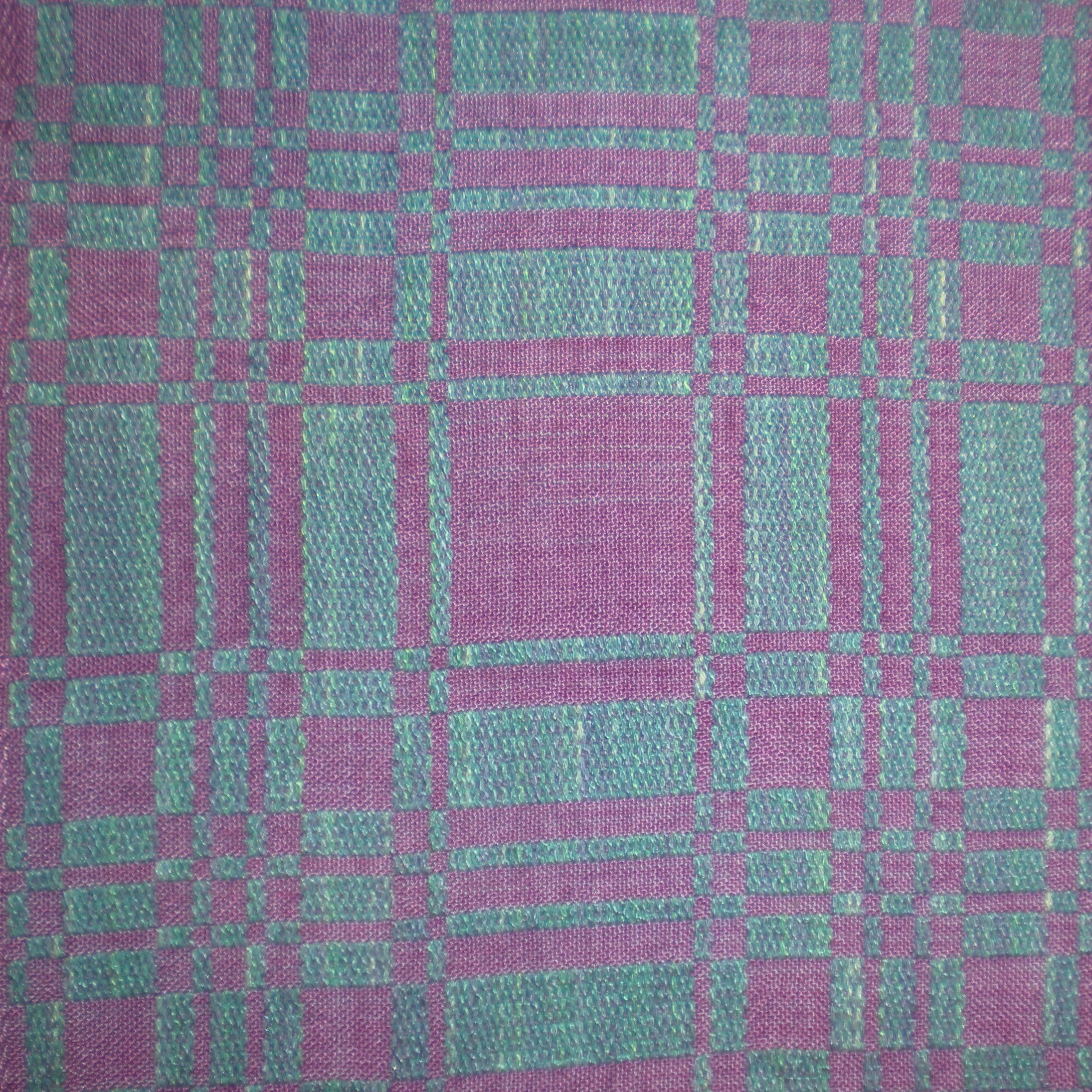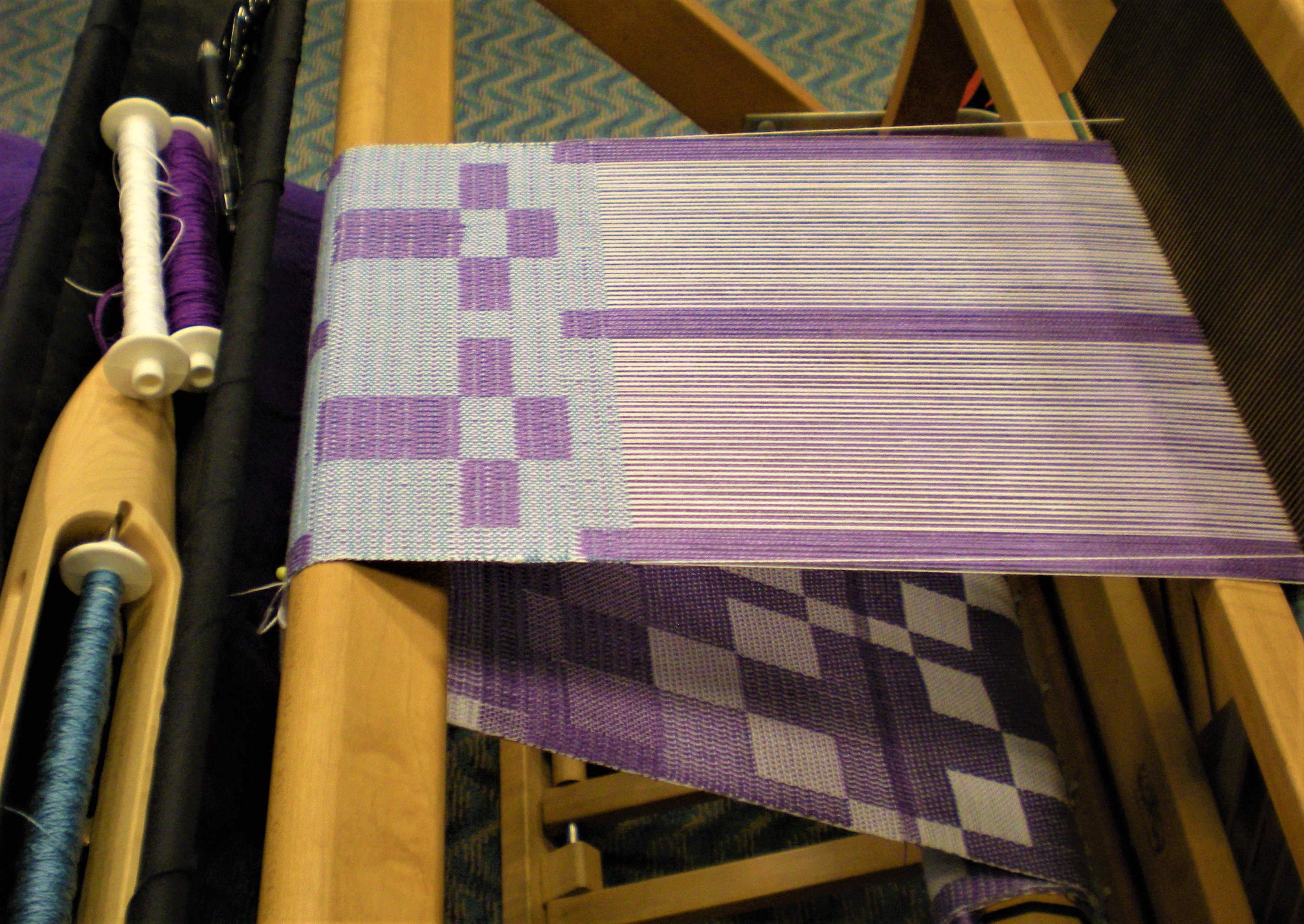By Judith Preckshot, WGM Education Committee Member
Have you ever wondered how you were going to use your second back beam? Or what a supplemental warp is? Or how you could use a supplemental warp when you have only one back beam? Or what in the dickens is “Beiderwand”? Well, you can learn that and much more in Karen Donde’s April 12-14 workshop, “Turned Biederwand: One Threading, Multiple Structures,” as I discovered when I took a similar 3-day workshop at the 2012 Convergence in Long Beach, CA.
According to Madelyn van der Hoogt in A Pocket Dictionary of Weaving Terms for Today’s Weavers, beiderwand is “a subset of lampas (a form of double weave with a main or foundation structure and a secondary or patterning structure). In beiderwand, free double cloth appears in the areas where the main structure is woven on the top surface of the cloth (usually the pattern areas). In the other areas (usually the background) the secondary weft weaves over the main structure, but the secondary warp remains underneath, causing the two structures to be interconnected.” Normally, beiderwand is a two-shuttle weave structure, with tabby weft alternating with pattern weft. By turning the draft (trading treadling for threading), you can weave more agilely with only one weft shuttle: the supplementary pattern threads are in the warp.
All but one of the participants in the 2012 workshop were using workshop (table) looms with a single back beam, so we learned how to add a second warp using a weighted-warp system. This worked with minor glitches on the small workshop looms, but will be easier to manipulate on the Guild’s floor looms. In addition to standard beiderwand, we also learned how to use the same threading adapted to other weave structures. As an intermediate-level weaver, this workshop was a great introduction to several weave structures unknown to me. It also presented learning challenges to more experienced weavers in the workshop.
Karen, whose yardage deservedly took first prize at that Convergence, brought many beautiful samples to show the range of possibilities this structure offers, and she shared her knowledge most generously with her students. For inspiring images of her work, visit her website here.
You don’t want to miss out on this opportunity to learn from a master weaver! Read more and register for her workshop here.



